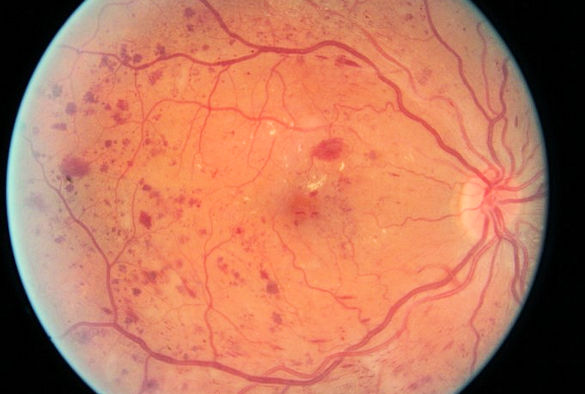Liverpool is to lead on a £1.15 million international research project to help transform early detection of diabetic eye disease in developing countries.
Researchers from the University of Liverpool, St Paul’s Eye Unit at the Royal Liverpool University Hospital and Peking University People’s Hospital in China aim to transform early detection of diabetic eye disease.
Diabetic retinopathy (DR) is one of the most common causes of visual loss in the world and can be prevented if it is detected early. High blood sugar causes the fine blood vessels in the retina to leak fluid or to close resulting in the retina becoming starved of oxygen and waterlogged.
150 million
Over 110 million people in China live with diabetes and this number is expected to increase to 150m by 2040.
A patient with DR will not be aware of the problem until vision declines, a stage when the damage is often irreversible. Prompt laser treatment, injections of drugs into the eye, or complex surgery, is required to limit the damage. At the moment people with diabetes in China and other rapidly developing countries around the world frequently present with very advance disease.
Improving early diagnosis and treatment of DR is one of the principal objectives of the Chinese Government’s 5-Year National Plan of Eye Health (2016-2020). Current methods of detecting DR rely on costly imaging equipment and many skilled personnel to take and interpret retinal images. China has very few health workers with these skills.
The University of Liverpool in partnership with St Paul’s Eye Unit and the Royal Liverpool and Broadgreen University Hospitals NHS Trust has been leading research into eye screening for the disease since 1991.
Large-scale detection
The research team have developed an innovative whole systems approach for the detection of DR in China which will be scalable and cost-effective to cope with the rapidly increasing and high numbers. They will combine machine and human intelligence with novel, low-cost, diagnostic technologies so that large scale early detection of sight-threatening disease can be performed by non-expert health care workers at the time and place of patient care.
The Engineering and Physical Sciences Research Council and the National Institute for Health Research have committed the funding for the project through the Global Challenges Research Fund, a £1.5 billion government fund to support cutting-edge technology that addresses challenges faced by low and middle income countries.
Professor Simon Harding, University of Liverpool Chair of Clinical Ophthalmology and Honorary Consultant Ophthalmic Surgeon, St. Paul’s Eye Unit, said: “Building on an existing collaboration between the University of Liverpool, Peking University and the Chinese Medical Association (CMA), our joint research team from Liverpool and China of engineers, statisticians, education specialists, eye doctors and health economists are well placed to develop a new diagnostic imaging solution tailored to local needs.
“We will develop a new low-cost, camera designed specifically for the needs of China. This device will produce both high- quality colour images and optical coherence tomography (OCT) images of the retina.”
OCT is widely available but current commercial systems are very expensive. The new device will be based on novel patent-pending technology and will be first tested on human donor tissue.
Upskilling health workers
Dr Yalin Zheng, Senior Lecturer in Ophthalmic Imaging, University of Liverpool, said: “Detection and treatment of sight threatening DR will prevent disability with benefit to Chinese society and China’s economy. Our research team will also engage with policy makers who occupy leading roles in the CMA.
“Our systems will upskill health care workers, strengthen existing health systems and build research capacity in China. Dissemination of our techniques through open-source software will maximise benefits for other low and middle-income countries.”
To learn more about diabetic retinopathy and how it is detected please watch the following video featuring Dr Tici Criddle:
